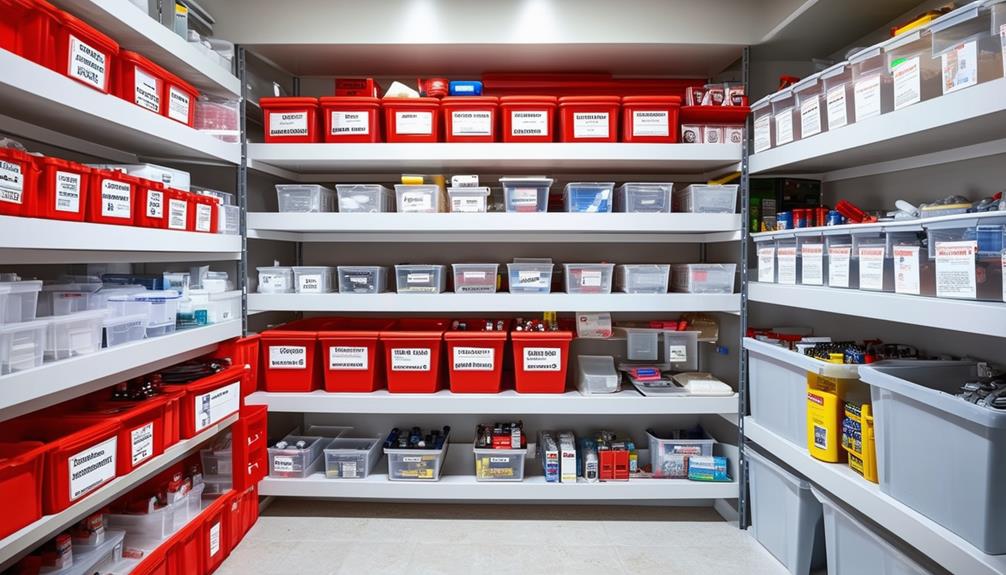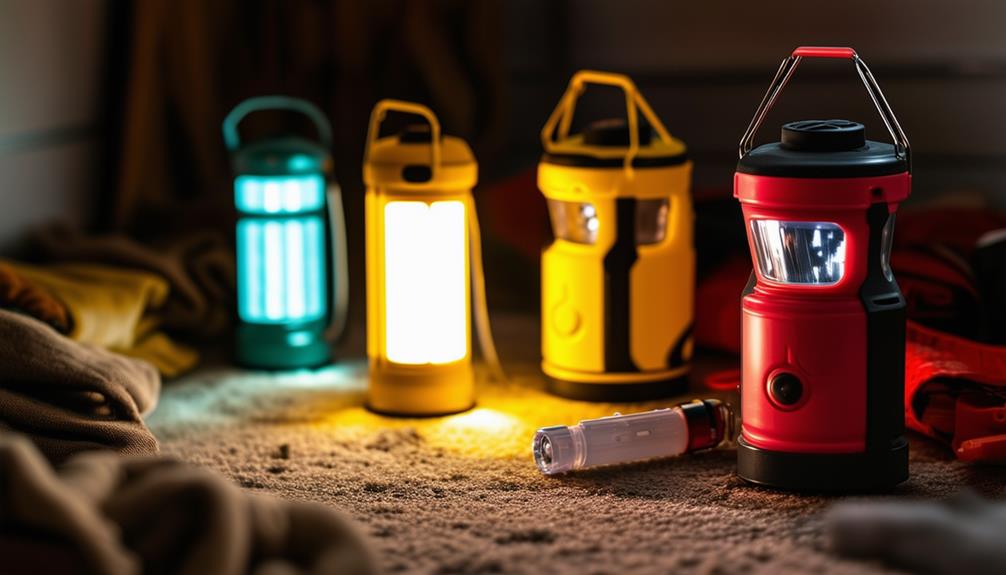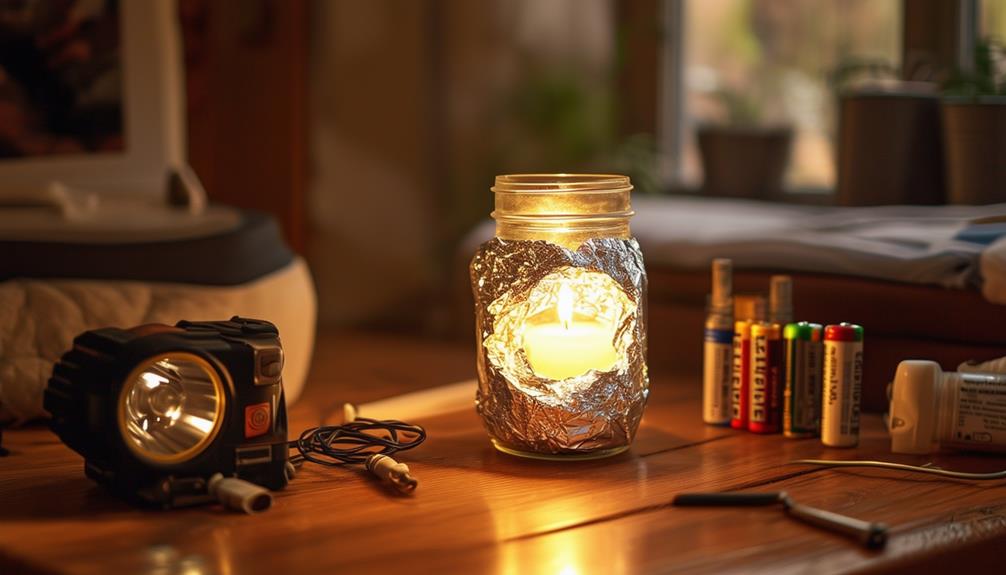The Benefits of LED Emergency Lighting During Blackouts

When a blackout occurs, you might find yourself scrambling for a flashlight or stumbling in the dark. However, LED emergency lighting can entirely change that scenario. These systems provide immediate, long-lasting illumination, ensuring safe navigation during power outages.
Not only do they light up a room, but they also comply with regulatory standards and offer impressive energy efficiency, making them cost-effective over time. Whether in your home or business, LED emergency lighting is more than a convenience—it's an essential safety feature.
But how exactly do these systems work, and what makes them so reliable?
Importance of Emergency Lighting
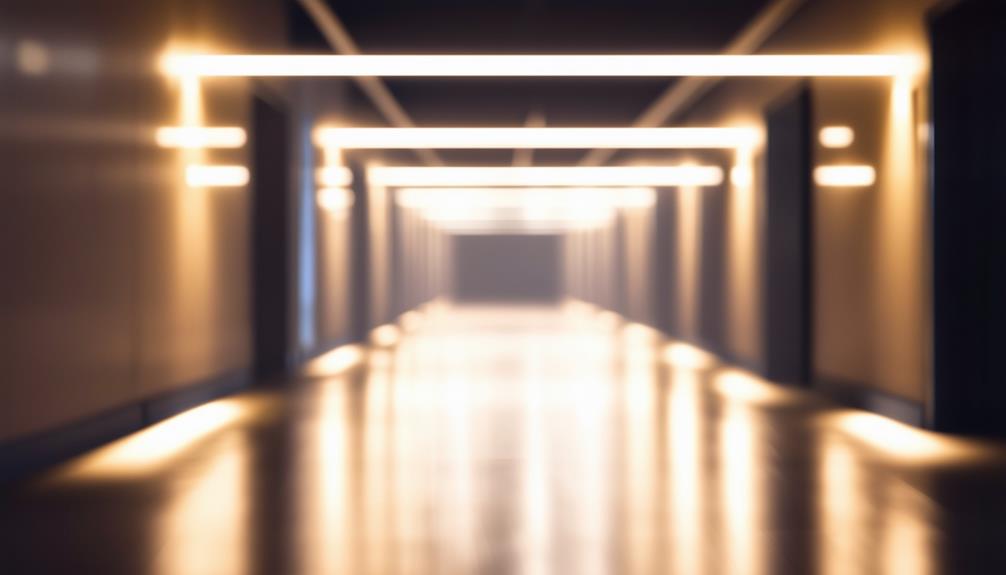
Ensuring visibility and guiding occupants to safety during blackouts, LED emergency lighting is essential for maintaining order and preventing panic. A power outage during an emergency can plunge a building into darkness, creating hazardous conditions. Reliable lighting is crucial for navigating these situations safely. LED emergency lighting provides the necessary illumination, ensuring that everyone can see and follow evacuation routes effectively.
One of the major benefits of LED emergency lighting is its energy efficiency. LEDs consume less power than traditional lighting systems, which means they can last longer on backup power sources. This longevity is crucial during extended blackouts, giving occupants more time to evacuate safely. Additionally, LEDs are durable, reducing the likelihood of failure during critical moments.
Emergency situations are unpredictable, but with proper LED emergency lighting in place, preparedness is enhanced. These systems are designed to activate automatically during a power outage, ensuring immediate visibility. By maintaining clear and illuminated pathways, LED emergency lighting helps reduce panic and facilitates a smooth evacuation process. Effective emergency lighting isn't just a convenience; it's a lifesaver in critical moments.
Regulatory Compliance Standards
To ensure your LED emergency lighting complies with regulatory standards, it's essential to adhere to both NFPA 101 and OSHA regulations.
OSHA requires that emergency lighting provide a minimum of 1.5 hours of illumination during power outages and maintain at least one foot-candle of light along evacuation routes. Following these guidelines is crucial for ensuring safety and maintaining legal compliance.
NFPA 101 Compliance
Adhering to NFPA 101 standards is crucial for ensuring that your building's emergency lighting functions effectively during power outages. NFPA 101 specifies requirements for emergency lighting to secure safety during such events. Compliance with these standards ensures your building is prepared to handle emergencies, guiding occupants safely along evacuation routes.
To meet NFPA 101 compliance, your emergency lighting must provide adequate illumination during power outages. This involves installing lights that automatically activate when the main power fails, ensuring that pathways, stairways, and exits are well-lit. The primary objective is to maintain order and safety, minimize panic, and facilitate safe evacuation.
NFPA 101 outlines clear regulations for emergency lighting, emphasizing the importance of reliable illumination in crisis situations. By adhering to these guidelines, you ensure that your emergency systems meet the required standards, providing peace of mind that your building is prepared for unexpected power failures.
Compliance isn't just about meeting legal standards; it prioritizes the safety and well-being of everyone in your building. Ensure your emergency lighting meets NFPA 101 standards to safeguard lives and enhance security during critical moments.
OSHA Illumination Standards
OSHA standards mandate that emergency lighting must last at least 1.5 hours during power outages to ensure safety and compliance. This requirement ensures that evacuation paths remain clearly visible and safe, reducing the risk of accidents and maintaining order during emergencies.
According to OSHA regulations, emergency lighting must provide at least one foot-candle of light along evacuation paths, ensuring visibility and helping individuals avoid obstacles.
Meeting these illumination standards is crucial for preparing your facility for emergencies. Compliance with OSHA regulations for emergency lighting minimizes panic and facilitates a smooth evacuation process, thereby providing a safer environment for everyone in the building.
Proper implementation and maintenance of emergency lighting in line with OSHA standards are essential. It isn't sufficient to merely install emergency lights; they must be correctly maintained to be effective when needed.
Ensuring that your emergency lighting complies with OSHA regulations will help protect lives and property during critical moments, making it an indispensable part of your overall safety strategy.
Advantages of LED Lighting
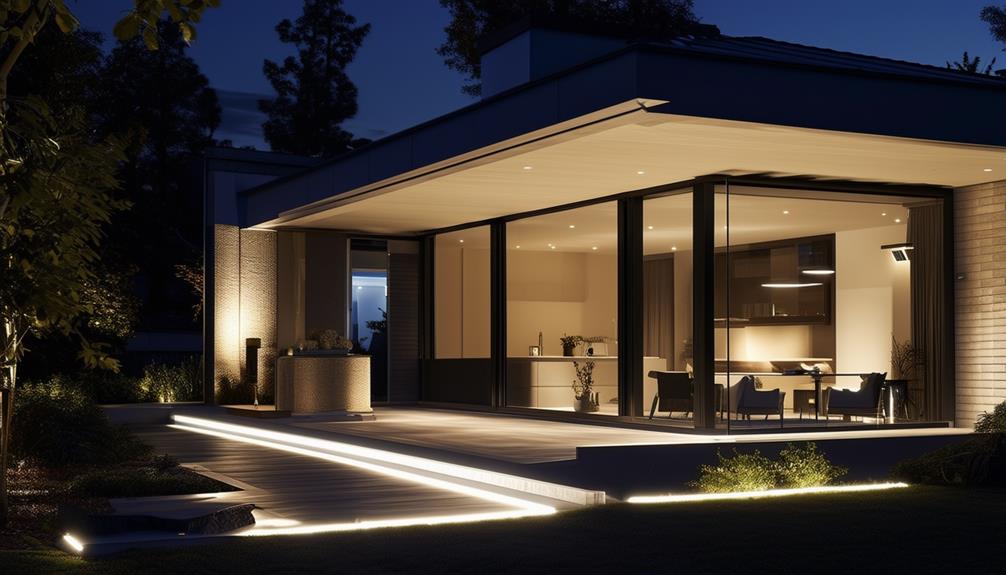
LED emergency lighting offers unparalleled longevity and efficiency, making it an ideal choice during blackouts. With LED emergency lights, you benefit from energy-efficient lighting that can last up to 50,000 hours, ensuring long-lasting illumination when you need it most.
Unlike traditional lighting options, LEDs require low maintenance, saving you both time and money over the long term. The durability of LED lights allows them to withstand challenging emergency environments, providing reliable performance during critical moments.
You won't have to worry about frequent replacements or failures, as these lights are built to last. Their energy-efficient nature also means they consume less power, leading to significant savings on your electricity bills over time.
One of the key advantages is that LED lights offer far better cost-efficiency compared to incandescent or fluorescent lamps. While the initial investment might seem comparable, the long-term benefits are substantial. You get more hours of use and fewer maintenance hassles, making LEDs a smart financial decision.
Implementation and Maintenance
To ensure your LED emergency lighting system functions effectively during power outages, it must be installed by a licensed electrician and undergo regular maintenance checks. Verify that all battery backups and fixtures are operational. Additionally, always adhere to safety and compliance standards to guarantee optimal performance and reliability.
Qualified Installation Required
A skilled electrician must set up your LED emergency lighting to ensure it operates during blackouts. Proper placement guarantees that your emergency lights will work effectively when you need them most. Without professional installation, you risk an unreliable system that may fail during a power outage.
Moreover, qualified installation is essential for compliance with safety standards and regulations, ensuring your building meets all legal requirements.
Hiring a certified electrician is an investment in peace of mind. Professionals understand the complexities of LED emergency lighting systems and will ensure that every component is correctly arranged. This expertise reduces the risk of malfunctions and enhances the system's reliability.
Maintenance is another crucial aspect. While we'll explore regular maintenance checks further, it's worth noting that qualified installation lays the foundation for simpler and more effective maintenance. A well-installed system is easier to maintain, ensuring your emergency lights stay operational for years.
Regular Maintenance Checks
Once your LED emergency lighting system is professionally installed, regular maintenance checks are essential to ensure it functions reliably during blackouts. These checks help verify that all components, including battery backups and fixtures, remain operational, allowing you to identify and address potential issues before they escalate into significant problems.
Implementing scheduled maintenance routines extends the lifespan of your LED emergency lighting systems. Regular inspections enable you to replace failing components and prevent malfunctions during critical situations. This not only keeps your lighting system operational but also saves you from costly emergency repairs or replacements.
Moreover, regular maintenance checks ensure compliance with safety standards and regulations for emergency lighting systems. Compliance isn't just about meeting legal requirements; it's about ensuring the safety of everyone in your building during a blackout. By maintaining your system, you're proactively safeguarding lives and property.
Safety Compliance Adherence
Ensuring your LED emergency lighting system complies with safety regulations such as NFPA and OSHA is crucial for both initial installation and ongoing maintenance. Proper installation by a certified electrician is necessary to meet UL certification standards, ensuring your system functions reliably during blackouts. Emergency drivers, which are essential components enabling your LED lights to operate during power outages, must adhere to Life Safety standards.
Regular maintenance checks are vital to verify that your LED emergency lighting system remains functional. By adhering to compliance regulations, your lighting system will be prepared for critical situations, providing safety and peace of mind.
| Aspect | Requirement | Benefit |
|---|---|---|
| Installation | Certified Electrician | Ensures proper setup |
| Emergency Drivers | Must meet UL standards | Reliable operation during outages |
| Maintenance | Regular checks | Continuous functionality |
| Compliance with Life Safety | Adherence to NFPA and OSHA standards | Legal and operational readiness |
Adhering to these standards not only ensures the safety of your building but also guarantees that your LED emergency lighting system is always ready to provide illumination when needed most. Regular maintenance and compliance checks will keep your system operating efficiently, safeguarding both people and property.
Energy Efficiency Impact

Switching to LED emergency lighting can significantly reduce energy consumption and lower electricity bills during blackouts. LEDs are up to 80% more energy-efficient than traditional lighting, making them an optimal choice for emergency situations. This efficiency translates to cost savings on electricity, even when the power is out.
LED emergency lights provide reliable illumination while maintaining minimal energy use. Beyond cost savings, choosing LED emergency lighting also offers benefits in terms of longevity and reduced maintenance. LEDs have a long lifespan, resulting in fewer replacements and lower maintenance costs over time. They convert 80% of the energy they consume into light, ensuring effective and efficient illumination during blackouts.
Key benefits include:
- Cost Savings: LEDs use up to 80% less energy than traditional lighting, significantly lowering your electricity bill.
- Environmental Impact: Reduced energy consumption leads to a lower carbon footprint, making LEDs an eco-friendly option.
- Reliability: Long-lasting LEDs minimize the need for frequent replacements, ensuring consistent emergency lighting and peace of mind during outages.
Switch to LED emergency lighting to experience these substantial benefits in energy efficiency and reliability.
Home and Commercial Applications
In both home and commercial settings, LED emergency lighting ensures reliable illumination during blackouts, enhancing safety and visibility. Whether at home or managing a business, these lights enable clear visibility, reducing the risk of accidents and facilitating easier navigation through spaces.
LED emergency lights are highly energy-efficient, consuming up to 80% less energy than traditional lighting sources. This efficiency not only reduces energy bills but also makes them more environmentally friendly. Additionally, they're durable, with many models having lifespans of up to 50,000 hours, minimizing the need for frequent replacements and adding to their convenience.
Cost-effectiveness is another key benefit. Although the initial investment in LED emergency lights may be higher than traditional lighting, the long-term savings on energy costs and maintenance make them a practical choice for both homes and businesses. They're built to last, ensuring maximum return on investment over time.
In commercial settings, these lights are essential during power outages, helping maintain smooth and safe operations. At home, they provide peace of mind by ensuring preparedness for any blackout situation.
Conclusion
During blackouts, the importance of LED emergency lighting can't be overstated. These systems ensure safety and regulatory compliance while being energy-efficient and cost-effective.
LED emergency lighting provides durable and reliable illumination, helping to guide individuals to safety in both residential and commercial settings. They offer peace of mind and a clear evacuation route. Opt for LED emergency lighting for a smart, efficient, and trustworthy solution during power outages.

